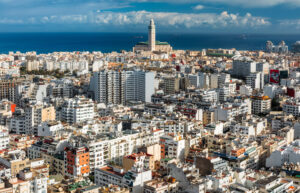
This week brought encouraging news for Japan’s ongoing battle to defuse its demographic timebomb: in 2024, the number of babies born to one sector of the population rose to a record of more than 22,000. This figure marks an increase of about 3,000 from the previous year and a 50% rise compared to a decade ago. However, these births were not from Japanese women but from immigrants, highlighting a persistent challenge for the nation.
The cries of babies born to women from China, Brazil, the Philippines, and Vietnam echo through maternity wards, underscoring the failure of successive Japanese governments to persuade local couples to have larger families. According to recent data, births among Japanese parents stood at 686,000, a decrease of 41,000 from 2023. This comes as Japan’s foreign population edges towards 4 million, representing 3.2% of the total 124 million population—a figure unimaginable just a decade ago.
Immigration: A Necessary Shift
The surge in migration has not occurred by accident. It has been seven years since Japan’s then Prime Minister Shinzō Abe, known for his conservative stance, acknowledged the necessity of accepting more low-skilled workers to address labor shortages. Today, non-Japanese faces are common in towns and cities and increasingly in depopulated rural regions. Immigrants are integral to the workforce, contributing in sectors like retail, hospitality, construction, and agriculture.
Japan’s historical image as a modern-day sakoku, a nation of self-imposed isolation, is becoming outdated. The national debate over migration, however, remains contentious. The recent elections saw the Sanseito party, a minor right-wing group, gaining traction by advocating for a “Japanese first” policy. Sanseito now holds 15 seats in the 248-seat upper house, in addition to three in the lower house.
The Political Landscape and Immigration Debate
Sanseito’s rise could be temporary, as some commentators suggest, with voters potentially returning to mainstream parties. Nevertheless, the party has already influenced the immigration debate. All major political parties, including those on the center-left, have expressed concerns over foreign workers. The ruling Liberal Democratic Party (LDP) has pledged to reduce illegal immigration to zero and ensure better integration of guest workers.
During the LDP’s recent leadership contest, winner Sanae Takaichi launched her campaign by criticizing foreign tourists, claiming without evidence that she witnessed a visitor assault a sacred deer in Nara. Other politicians have echoed unfounded claims that foreign migrants are taking jobs from Japanese workers and are more likely to commit crimes.
Instances of Xenophobia
The debate occasionally spills into xenophobia. In Kawaguchi, near Tokyo, Kurdish residents have been targets of hate speech and misinformation. Authorities in four regional cities recently had to clarify that a now-canceled friendship initiative with African countries would not lead to an influx of workers from Mozambique, Nigeria, Ghana, and Tanzania.
Meanwhile, in Hokkaido, locals are protesting plans to build accommodations for over 1,000 seasonal workers, many of whom are foreign, to support the tourism and construction sectors.
Economic Necessity vs. Political Rhetoric
Despite the political rhetoric, economic necessity may drive migration forward. Experts predict that foreigners could comprise more than 10% of Japan’s population in 15 years, three decades earlier than previously forecast. This projection aligns with the views of business leaders polled by the Nikkei business paper in September, who overwhelmingly agree that migrant workers are crucial to maintaining the supply chain.
“Migrant workers are the vital link in a supply chain that would strain to breaking point without them,” noted a recent survey of business leaders.
While Japanese employers have embraced the need for migrant workers, the political landscape remains divided. The choice between economic decline and a more diverse population is a decision that Japan’s politicians continue to grapple with.
As Japan navigates these demographic and political challenges, the future of its immigration policy will likely play a critical role in shaping the nation’s economic and social landscape.





